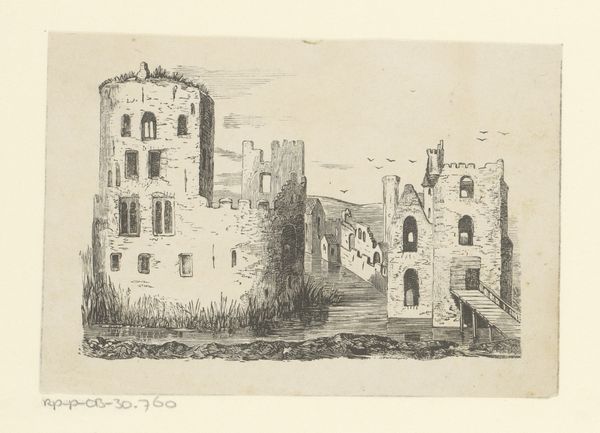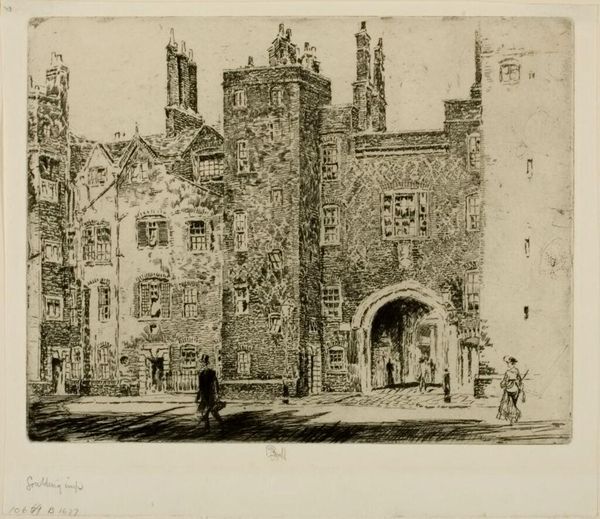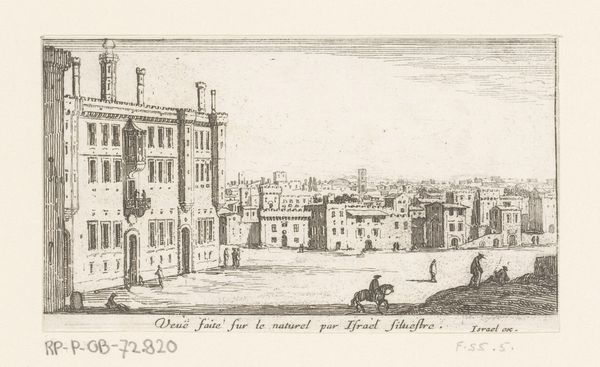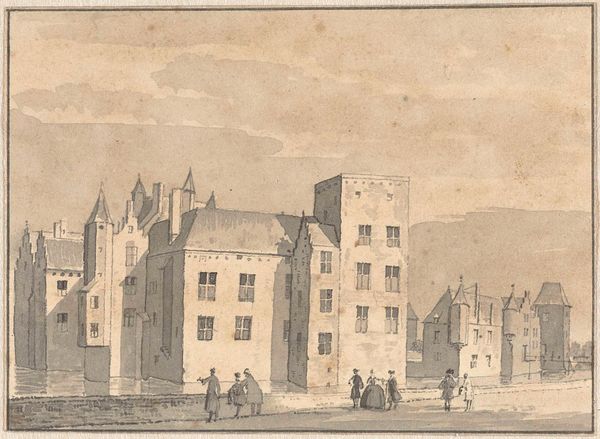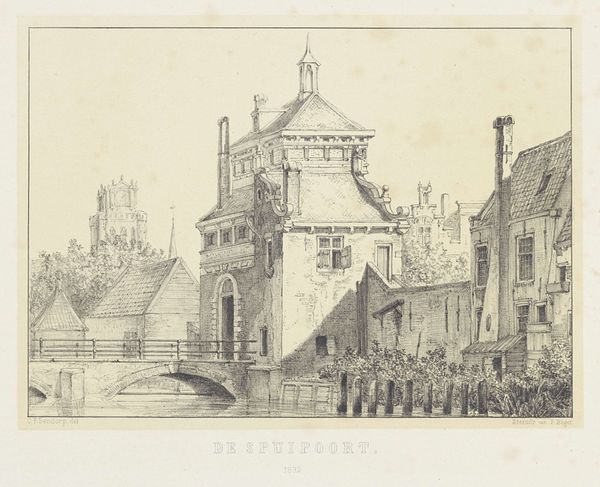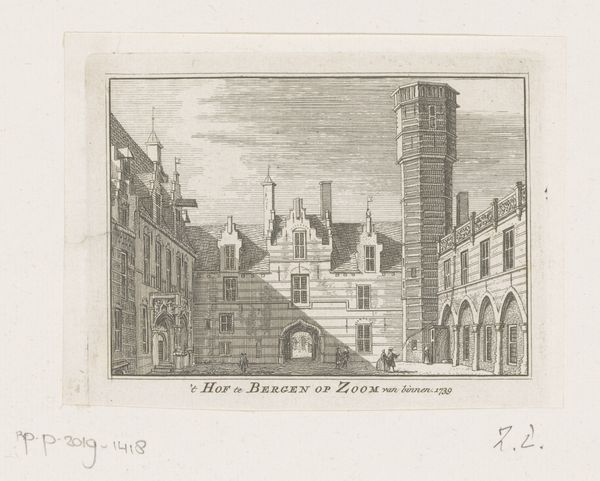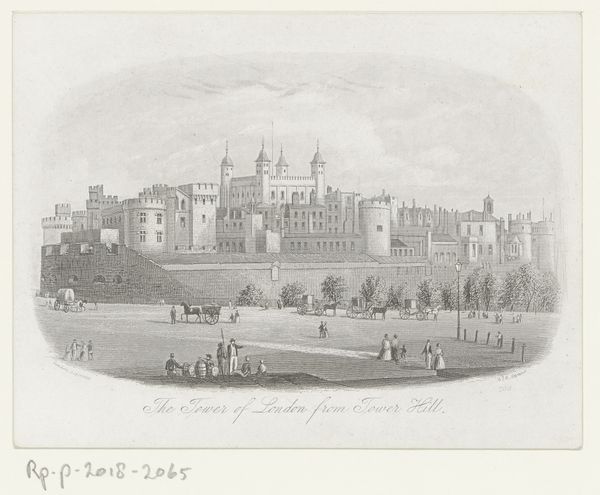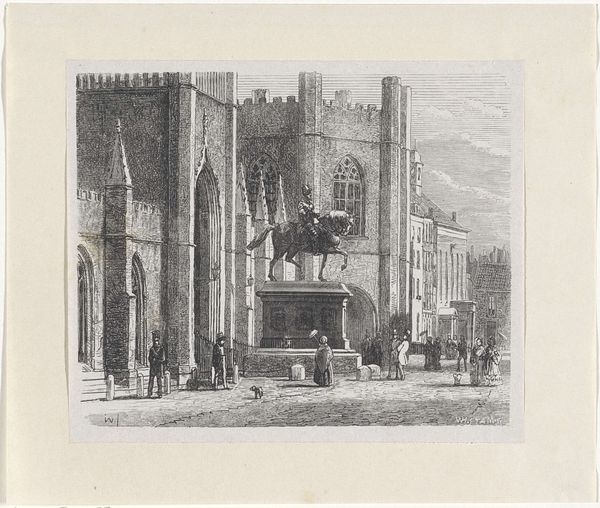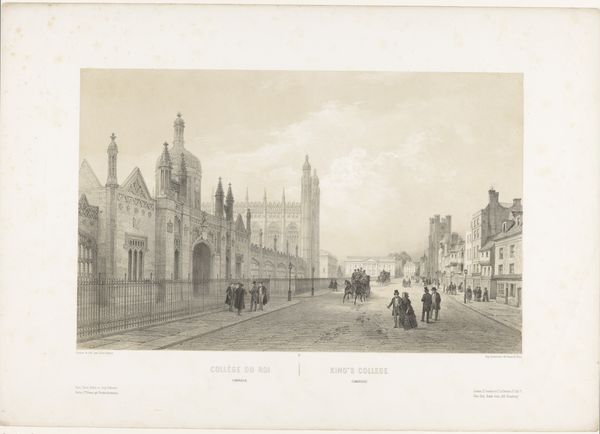
Dimensions: height 116 mm, width 153 mm
Copyright: Rijks Museum: Open Domain
This print of Windsor Castle was likely made in the 18th or 19th century, though the artist remains unknown. It’s rendered through the technique of engraving, which involves meticulously incising lines into a metal plate. Ink is then applied, and the surface wiped clean, leaving ink only in the etched grooves. The plate is pressed onto paper, transferring the image. The choice of engraving is telling. Unlike painting, which emphasizes the artist’s unique touch, engraving is a reproductive medium. It allows for the mass production of images and their wide circulation. In the context of Windsor Castle, this print becomes a vehicle for disseminating an idealized view of British heritage. Engraving also speaks to the social context of labor. It demands technical skill and patience, reflecting the values of precision and repetition characteristic of early industrial production. By understanding the printmaking process, we see how this image participates in the broader social and economic landscape of its time. It allows for the democratization of the image, but also a system of artistic labor.
Comments
No comments
Be the first to comment and join the conversation on the ultimate creative platform.


